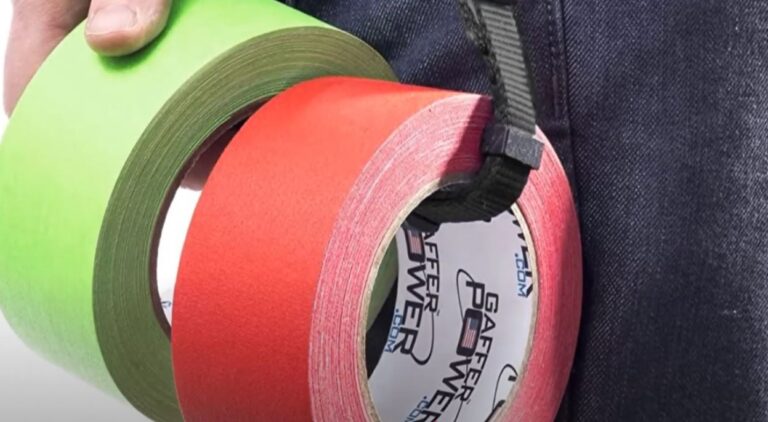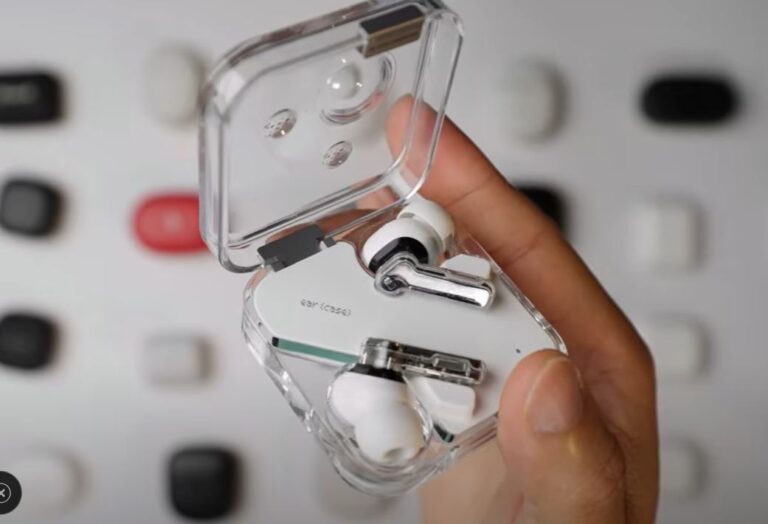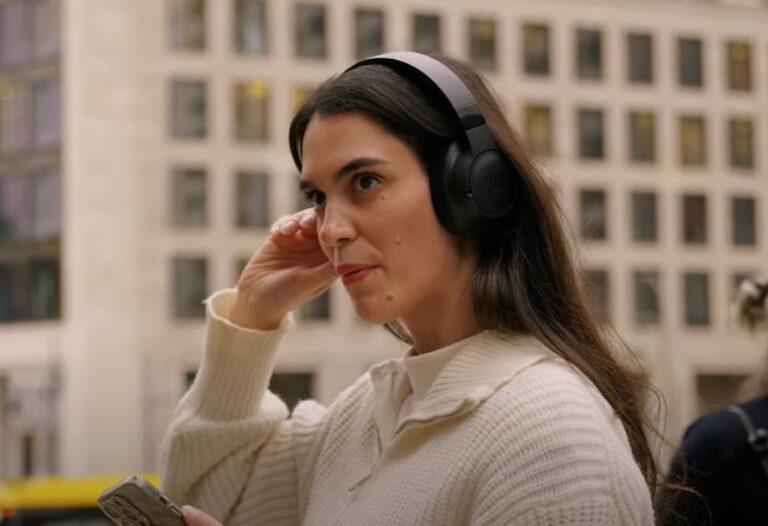How to Make Noise Cancelling Headphones Work Better
Most people invest in noise-canceling headphones to escape a noisy world, only to find the results less than perfect.
Perhaps the cancellation seems weak, a persistent background hum remains, or the headphones feel uncomfortable after a short time.
The truth is, the full potential of these devices isn’t unlocked by simply turning them on. It requires a deeper understanding of how the technology works and a few practical steps to optimize their performance.
This guide will provide you with easy-to-follow, practical tips based on real-world use and testing. By the end, you’ll be able to transform your headphones from a simple audio accessory into a powerful tool for focus and peace.
Understand How Noise-Cancelling Works: The Foundation of Performance
To truly get the most out of your headphones, you must first understand the two core types of noise cancellation at play. When you know how they work, you can address the common frustrations that users face.
1. Active vs. Passive Noise Cancellation (ANC vs. PNC)
Every pair of noise-canceling headphones uses a combination of two methods to block sound:
- Passive Noise Cancellation (PNC): This is the most basic form of noise reduction and is based purely on the physical design of the headphones. It’s all about creating a physical barrier between your ears and the outside world. The materials, padding, and shape of the earcups or eartips work to absorb and block sound waves before they reach your eardrums. Think of it like putting on a pair of earmuffs. PNC is highly effective at blocking high-frequency sounds—like the chatter of a nearby conversation, a phone ringing, or the clatter of a keyboard. However, it is largely ineffective against low-frequency hums.
- Active Noise Cancellation (ANC): This is the more advanced, “smart” part of the technology. ANC works by using tiny, built-in microphones to “listen” to the ambient sound in your environment. The headphone’s internal processor then creates an inverse sound wave—a “negative” of the ambient sound—that is precisely timed to cancel out the original sound. When the original sound wave meets its inverse, they essentially neutralize each other. ANC is exceptionally good at eliminating low-frequency, consistent sounds such as the drone of an airplane engine, the hum of an air conditioner, or the rumble of traffic. It is less effective against sudden or irregular noises like voices or a car horn.
Understanding this dual-system is crucial. If you’re frustrated that your headphones aren’t blocking a conversation in the next cubicle, the issue isn’t necessarily your ANC—it’s that PNC is the primary method for that type of sound, and the physical seal of your headphones may be the problem.
2. Why Fit, Seal, and Environment Matter More Than You Realize
Many people assume that ANC is a magic button that creates silence instantly. The reality is that the effectiveness of both ANC and PNC is deeply dependent on external factors.
- The Critical Importance of a Perfect Seal: This is the single biggest factor that can make or break your noise-cancellation experience. For both PNC and ANC to work properly, the headphones must create a tight, uncompromised seal around your ears.
- For over-ear headphones, a gap between the earcups and your head—caused by things like eyeglasses, thick hair, earrings, or a poorly adjusted headband—lets sound “leak” in, rendering both ANC and PNC less effective.
- For in-ear earbuds, the eartips must fit snugly and securely in your ear canal. If the tip is the wrong size, it will not create a vacuum-like seal, allowing external sound to bypass both cancellation systems.
- Microphone Functionality: The microphones used for ANC are incredibly sensitive. If they are blocked by your hair, your hand, or debris, they cannot accurately pick up ambient sound. This is a common issue, especially with earbuds, and it directly compromises the processor’s ability to create the correct anti-noise wave.
- Optimizing for Your Environment: As noted, ANC works best on consistent, low-frequency sounds. If you are in an environment with a lot of sudden or high-frequency noise, your headphones will not perform as a “silence button.” In these cases, it’s best to use them for their intended purpose—reducing the constant, ambient background noise—rather than expecting them to block everything. Some headphones even have specific modes (e.g., “anti-wind mode” or “transparency
- mode”) that are designed to optimize performance for a specific environment.

By recognizing that noise cancellation is a two-part process dependent on physical fit and environmental factors, you can move beyond simple frustration and start to actively optimize your headphone’s performance for your specific needs. The next steps will guide you through the practical adjustments you need to make to achieve the quiet you’re looking for.
3. Optimize the Fit and Seal
The foundation of any good noise-cancellation experience is a perfect fit. Without it, even the most advanced audio technology will fail to perform at its best. A tight seal is crucial for both Active Noise Cancellation (ANC) and Passive Noise Isolation (PNC), as it prevents sound from leaking in and out.
- Choosing the Right Ear Tips or Ear Pads: This is the most important step for both in-ear and over-ear headphones. Many manufacturers, including Sony and Beats, provide a variety of ear tips and ear pads in different sizes and materials.
- In-ear earbuds: You must experiment with different ear tip sizes. The right fit should feel snug and secure, creating a slight vacuum in your ear canal without causing pain or discomfort. A common sign of a poor fit is weak bass, as low frequencies escape through the gaps. Some manufacturers, like Sony and Beats, offer a “Fit Test” in their companion apps to help you find the optimal size. You can also try different materials: silicone tips are flexible and durable, while memory foam tips expand to perfectly mold to the shape of your ear canal, often providing superior noise isolation.
- Over-ear headphones: For these, the seal comes from the ear cushions pressing against your head. Ensure the earcups fully enclose your ears and that the pads are not compressed or worn out. You can often purchase replacement ear pads to restore the original performance.
- Adjusting the Headband for Full Coverage: For over-ear headphones, a proper headband adjustment is key to distributing pressure evenly and ensuring the earcups maintain a consistent seal. Extend the sliders on the headband and place the headphones on your head so the earcups are centered over your ears. Then, slowly retract the sliders until the headband feels snug but not tight. A correctly adjusted headband should rest softly on the top of your head, with the clamping force of the headphones evenly distributed around your ears.
- Over-Ear vs. In-Ear: Which Provides Better Cancellation?
- Over-ear headphones generally provide better overall noise cancellation. Their large size and cushioned earcups naturally offer a high degree of passive noise isolation, which effectively blocks mid- and high-frequency sounds like voices. Their hybrid ANC systems, which use multiple microphones, can then more effectively cancel out low-frequency noise. They are often the best choice for loud, constant-noise environments like planes or trains.
- In-ear earbuds are also very capable, especially with modern ANC technology. They are better for portability and convenience. While they may not match the total cancellation of a premium over-ear model, they can still provide excellent noise reduction for everyday use in offices or cafes. The effectiveness of earbuds, however, is heavily dependent on the perfect fit of the eartip in the ear canal.
4. Update and Adjust Settings
The hardware is only one half of the equation; the software running your headphones is just as important.
- Keep Firmware Updated for Best ANC Performance: Manufacturers constantly release firmware updates that can significantly improve noise-canceling performance, audio quality, and battery life. These updates often contain refined algorithms that make the ANC more efficient at targeting specific types of noise. Ensure your headphones’ firmware is always up to date via the manufacturer’s app.
- Use the Companion App to Fine-Tune ANC Levels: High-end headphones from brands like Sony, Bose, and Apple come with a companion app that allows you to customize your experience. These apps often feature a “Noise Canceling Optimizer” that analyzes your unique head shape and environment to fine-tune the ANC for maximum effectiveness. You can also manually adjust the level of noise cancellation.
- Turn on Transparency or Adaptive Modes When Needed: Most premium headphones include a transparency mode that allows ambient sounds to pass through, so you can hear your surroundings without taking the headphones off. Some models have an adaptive noise-canceling feature that automatically adjusts the ANC level based on your environment. For example, it might lower the cancellation when you’re walking on a street to let in important sounds like traffic. Knowing when to use these modes is key to a versatile and safe listening experience.
5. Pair Noise Cancelling with Smart Habits
Even the most advanced headphones won’t perform at their peak if they’re used improperly. By combining your headphones’ technology with a few smart habits, you can create a truly focused and productive environment.
- Combine ANC with Low-Volume Music for Extra Effect: While Active Noise Cancellation is powerful, it’s not a magic mute button. It’s particularly effective at removing low, consistent hums but is less so with sharp, irregular sounds like a person talking nearby. You can achieve a much more profound sense of quiet by playing some low-volume music or a sound masking track. This helps to completely drown out the remaining high-frequency sounds that ANC can’t fully eliminate. White noise, brown noise, or classical music played at a low level can be incredibly effective for creating an immersive, distraction-free bubble.
- Reduce Competing Noise Sources in Your Environment: Think of your headphones as a tool, not a cure-all. You can significantly improve their performance by making small adjustments to your environment. If possible, close the door to your home office, move a fan to a different part of the room, or sit away from the busiest part of a cafe. By reducing the overall level of background noise, you give your headphones less work to do, allowing them to perform their core function of eliminating what’s left.

- Avoid Maxing ANC Battery by Using Wisely: Full-power ANC can be a significant drain on your headphone’s battery. While it’s great for an airplane or a loud commuter train, it may not be necessary in a quieter environment. If you’re working in a library or a relatively quiet office, consider lowering the ANC level or using a more passive, lower-power mode. This simple habit will extend the battery life, ensuring your headphones are ready for the next time you truly need them. This is an essential aspect of battery optimization for wireless models.
6. Maintenance for Long-Term Performance
Just like any other piece of technology, headphones require proper care to maintain their peak performance over time. Neglecting simple maintenance can severely degrade their noise-cancelling ability.
- Clean Ear Pads and Tips Regularly: Ear pads and tips collect sweat, skin oils, makeup, and dirt over time. This debris can compromise the seal, making the fit less effective. For silicone or plastic parts, you can use a cloth dampened with a little rubbing alcohol to clean them. For memory foam or leatherette pads, a dry microfiber cloth is often the best option. Regular cleaning not only improves the fit but also makes the headphones more hygienic to use.
- Replace Worn-Out Cushions to Maintain Seal: The foam or material inside ear pads will compress and lose its springiness over time, especially with frequent use. This reduces the passive noise isolation and compromises the seal needed for ANC to work. Most high-end headphone manufacturers sell ear cushion replacement kits. Swapping out worn-out pads for new ones is one of the most effective ways to restore your headphone’s original noise-canceling performance.
- Store Headphones Properly to Prevent Damage to Mics and Sensors: How you store your headphones matters. Leaving them carelessly in a bag can expose the tiny ANC microphones and other sensors to dirt, debris, or damage. These microphones are essential for the technology to work. Always store your headphones in their designated case or on a stand when not in use. This protects the delicate components and ensures your headphones are in perfect working condition for years to come. Proper headphone care is a small habit that yields huge long-term benefits.
7. Troubleshooting Common Problems
Even with the best headphones and the most diligent care, you might encounter issues that seem to degrade their performance. Here’s a guide to common problems and how to solve them.
- ANC Not Working? Reset and Recalibrate.
- The Problem: You’ve turned on noise cancellation, but it feels like it’s barely working. The ambient noise is still loud, and you’re not getting that quiet “bubble” you expect.
- The Cause: This is often a software or connectivity glitch. The headphones might be stuck in a specific mode, or the microphones might be experiencing an internal error. A simple reboot can often fix these noise-cancelling issues.
- The Fix: The first step is to perform a soft reset. Turn the headphones off completely, wait for a few seconds, and then turn them back on. If that doesn’t work, a factory reset might be needed, which can clear all old connections and return the headphones to their original settings. The exact method varies by brand, so check the user manual. For Bose headphones, for example, the process often involves a specific combination of holding the power and Bluetooth buttons. For others, it might require a button on the charging case.
- Hissing Sound? Adjust Environment or Update Firmware.
- The Problem: You hear a subtle, static-like hissing or white noise when ANC is enabled, especially in a quiet room.
- The Cause: This is often a normal byproduct of the Active Noise Cancellation process. As a Sony support article notes, this hiss is the sound of the headphones’ internal system working to cancel out ambient noise. However, if the hiss is loud or intrusive, it could be a sign of a problem. It can be caused by reflections from hard surfaces, an outdated firmware, or interference from other devices.
- The Fix: First, try moving to a different location, away from walls or other reflective surfaces. If the problem persists, check for and install any available firmware updates via the manufacturer’s app. These updates often contain bug fixes and refined algorithms that can reduce the hissing sound.
- Poor Bass? Check for Proper Seal.
- The Problem: Your headphones sound tinny or weak, and you’re not getting the rich, deep bass you expect. This is a form of audio distortion.
- The Cause: The most common cause of poor bass is a compromised seal. Low-frequency bass tones require a sealed environment to resonate properly. If sound is leaking out, the bass will sound weak and distant. This is a fundamental principle of headphone audio.
- The Fix: This is a physical problem that requires a physical solution. For over-ear headphones, ensure the earcups fully cover your ears and the headband is adjusted correctly. For earbuds, try different-sized ear tips to find one that creates a perfect seal in your ear canal. Some manufacturers’ apps have a “fit test” feature that can guide you.
8. When to Upgrade Your Headphones
Knowing when to upgrade can save you money and ensure you’re always getting the best performance. While audio gear doesn’t become obsolete as quickly as a smartphone, there are clear signs that it might be time for a new pair.
- Signs Your Headphones Are Outdated:
- Degraded Battery Life: This is the most common reason for an upgrade. Rechargeable batteries have a finite number of charge cycles. If your headphones that once lasted 30 hours now barely make it through a workday, it’s a clear sign the battery capacity has diminished and it’s time to replace them. For most headphones, the battery is not user-replaceable.
- Failing Components: If the headphone frame is cracked, the ear pads are worn out, or the hinges are loose, the physical integrity is compromised. This not only affects comfort but also, more importantly, the seal, which in turn degrades noise-cancellation performance.
- Outdated Connectivity: Older Bluetooth versions (e.g., 4.0 or 4.2) are less efficient and have a shorter range than modern ones (e.g., 5.3). If you are experiencing frequent connectivity drops or you cannot connect to multiple devices at once (no Bluetooth multipoint), a modern pair will offer a significant improvement.
- Lack of Essential Features: Your current headphones might lack features that have become standard, such as a high-quality voice microphone, a transparency mode, or a companion app for customization.
- Next-Gen ANC: A Reason to Upgrade For those with older models (e.g., 3-5 years old), the advancements in next-gen ANC can be a genuine reason to upgrade. Modern headphones are more effective at canceling a wider range of frequencies. The latest flagship models, often considered the best in the market, include:
- Sony WH-1000XM6: Building on the legacy of the industry-leading XM5, the XM6 is a new high point in noise-canceling technology, offering enhanced audio quality, improved comfort, and even more advanced ANC.
- Bose QuietComfort Ultra Headphones: Bose’s latest premium offering features a groundbreaking Immersive Audio mode and some of the most consistent and powerful ANC on the market, particularly in canceling human voices.
- Apple AirPods Max: While not the newest, the AirPods Max are still a top contender, with their strong ANC, exceptional audio quality, and seamless integration with the Apple ecosystem, making them a powerful choice for Mac and iPhone users.
In conclusion, upgrading is a personal choice based on your needs, but don’t hold onto a pair of headphones that no longer serve you well. When your current pair shows signs of aging, investing in a new, high-quality pair of premium noise-cancelling headphones will make a significant difference to your daily comfort, focus, and productivity
- Next-Gen ANC: A Reason to Upgrade For those with older models (e.g., 3-5 years old), the advancements in next-gen ANC can be a genuine reason to upgrade. Modern headphones are more effective at canceling a wider range of frequencies. The latest flagship models, often considered the best in the market, include:
- Sony WH-1000XM6: Building on the legacy of the industry-leading XM5, the XM6 is a new high point in noise-canceling technology, offering enhanced audio quality, improved comfort, and even more advanced ANC.
- Bose QuietComfort Ultra Headphones: Bose’s latest premium offering features a groundbreaking Immersive Audio mode and some of the most consistent and powerful ANC on the market, particularly in canceling human voices.
- Apple AirPods Max: While not the newest, the AirPods Max are still a top contender, with their strong ANC, exceptional audio quality, and seamless integration with the Apple ecosystem, making them a powerful choice for Mac and iPhone users.
In conclusion, upgrading is a personal choice based on your needs, but don’t hold onto a pair of headphones that no longer serve you well. When your current pair shows signs of aging, investing in a new, high-quality pair of premium noise-cancelling headphones will make a significant difference to your daily comfort, focus, and productivity.






